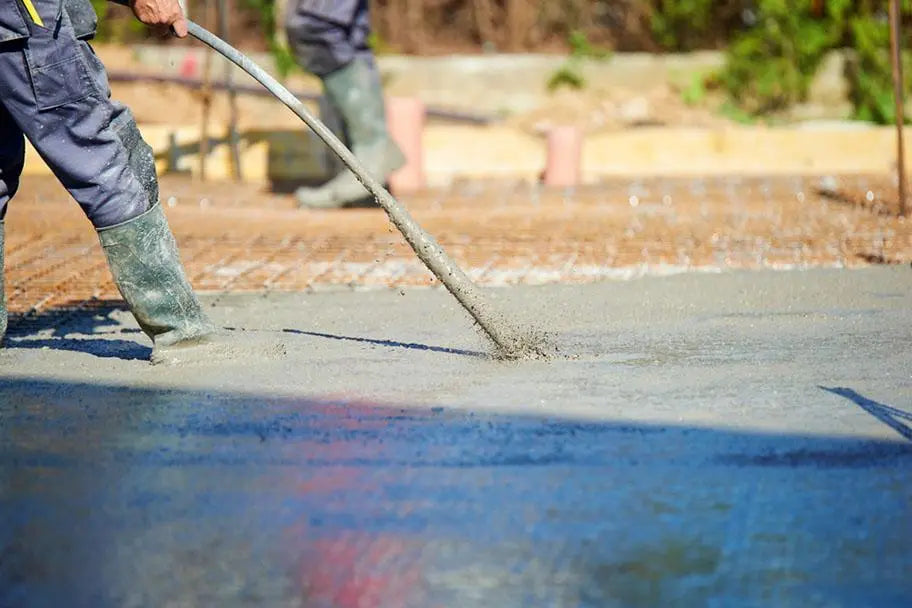Source: okawa somchai/ Shutterstock.com
A fresh concrete pour gives off the aura of near invincibility. Unless someone comes along with a jackhammer, it’s going to be there for a while. But a compromising element may be lurking beneath the surface: air pockets. When you pour a fresh surface, air pockets get trapped within. It’s inevitable. And you can imagine what this does to the integrity of your pour. Trapped air pockets—and there could be thousands of them in any job—will greatly reduce the longevity of your project. Air bubbles can also mar the surface of your concrete, leaving behind unsightly surface voids. But there are things you can do, and that’s what we’re here to talk about. Choosing and using the right concrete vibrator is the surest way to eliminate air pockets from your pours.
The Basics
Concrete vibrators basically do what they sound like: They shake and vibrate the air pockets out of your concrete before it hardens. A little vibration goes a long way toward boosting the durability of your project. So, let’s run down the basics of how best to use a concrete vibrator. You need a little know-how going in, because that concrete isn’t going to hold off on hardening until you’re ready to go. You need to move quickly and efficiently.
- First off, you should know that you can put your concrete vibrator to use during your pour or just after, inside the pour or on its surface. Surface vibration is not recommended for thicker pours. Internal vibration is the most common approach. For a visual of what that looks like, picture a mixer plunging into a bowl of especially thick batter. Before you get started, know that you want a head size that’s about one-quarter as thick as your concrete pour.
- With the right head size for the job, you should insert the tool as vertically as possible and hold it in place for a short interval. DO NOT turn the machine on until it is inserted, and never drag the machine through the concrete.
Shop All of Our Concrete Tools

Source: sonsart/ Shutterstock.com
- Once the machine is turned on, it should be pulled up slowly, not so fast that the air bubbles cannot escape. You should extract the vibrator at a rate of about one-to-three inches per second. You will be able to see the air bubbles rise to the surface. If the air bubbles cease to emerge, you know you’re set there at that spot. The duration of each plunge should be about fifteen seconds. You’ll then repeat the process by submerging the tool once again, this time about two feet away from where you just released the air.
For a lightweight yet rugged internal vibrator, consider our Wacker Neuson Vibrator Kit M1500. It’s a versatile choice that comes equipped with high-frequency flex-shaft internal vibrators. Of course, no matter the concrete task at hand, we have all the concrete tools you’ll need, from screeds to floats to just the right concrete saw.

Source: aimful/ Shutterstock.com
When air pockets are abundant, it won’t take a jackhammer to undo the work. Nope, it just takes time. Luckily, the right concrete vibrator will give your project a long life and a smooth, attractive surface you can be proud of.
Contact Contractors Direct for All Your Concrete Tool Needs
If you have questions about our concrete tools, we’re here for you! Reach out to us at 1-800-709-0002.

